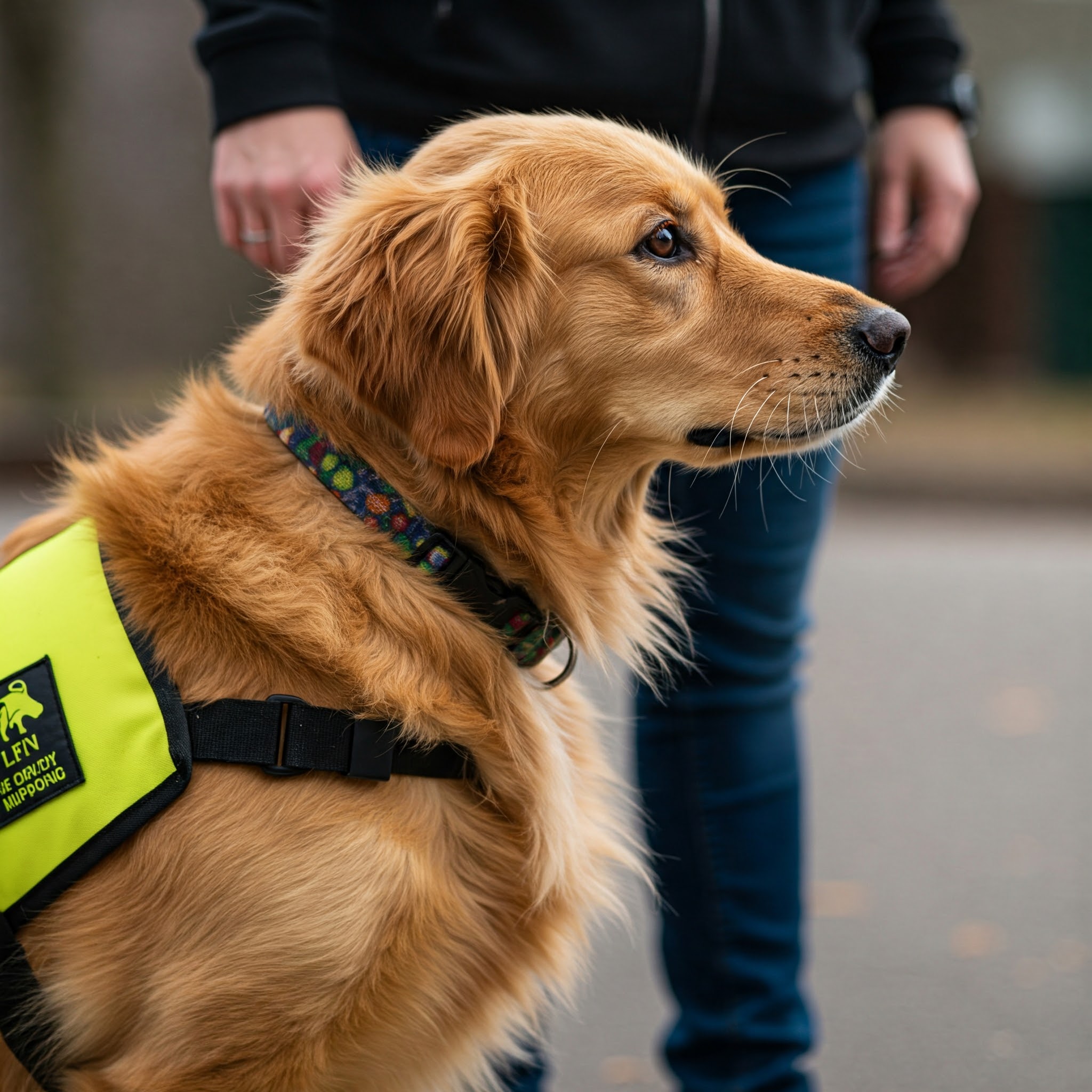How Can I Legally Take My Dog Everywhere
We love our dogs. Deeply. They are not just animals we feed and shelter. They are our companions, the ones that wait by the door, that watch us with wide eyes, that understand us in ways few humans ever will.
And because of that, we want to bring them with us. To the bank. To the restaurant. To the hotel. To the shop. To the airport. We want them beside us in all the places that life leads.
But that is where reality sets in. Because no matter how loyal or well-behaved your dog is, the world does not always make room. Laws exist. Restrictions hold. And love, unfortunately, is not a license.
So the question stands. How can I legally take my dog everywhere?
The truth is this. You cannot. Not unless your dog fits into a very narrow legal category.

The Only Kind of Dog That Has Legal Access Everywhere
Only one category of dog is legally allowed into almost every public space, from restaurants to malls to airplanes to offices to hospitals.
That is the service dog.
A service dog is not just a smart dog. It is not just a calm or friendly one. It is a dog that has been trained to perform specific, physical tasks that support a person with a documented disability. That might include guiding someone who is blind, alerting to seizures, assisting with mobility, calming a PTSD episode through physical interruption, or even helping with autism-related behaviors.
In the eyes of the law, that dog is not a pet. It is medical equipment. An extension of the person it serves. And because of that, most public and private establishments must allow it.
But only that kind of dog. Not your cuddly puppy who walks well on leash. Not your clever retriever who knows how to sit and shake. Not even your beloved rescue who helps you emotionally through hard times. The law draws a very sharp line.
What About Emotional Support Animals
An emotional support animal, or ESA, is a dog that provides comfort to a person with a mental health condition. They are often a lifeline for people with anxiety, depression, trauma, or grief. They matter. Deeply.
But the law does not grant them full access.
In many places, ESAs are allowed in housing, even where pets are usually banned. They used to be allowed on planes with special documentation, though even that has changed in many countries. But they do not have the right to enter restaurants, malls, shops, or other public spaces unless the owner of that space allows it by choice.
They are not service dogs. They do not perform trained tasks. So the law does not give them the same power.
And What of Therapy Dogs
Therapy dogs are trained to comfort strangers. You will see them in hospitals, libraries, classrooms, and disaster relief settings. They help children read. They calm veterans. They bring peace to the grieving.
But therapy dogs are not personal support animals. They work in invited environments. And the law sees them as pets.
They do not have special access. They cannot go wherever they want. Their welcome is extended only by permission.
Well-Trained Dogs Are Not Legal Everywhere But They Do Open Doors
Now here is where things get real. You may not be able to turn your dog into a service animal. And you should not fake it. But what you can do is build a dog that earns consideration. A dog that businesses want to welcome. A dog that is impossible to refuse.
That begins with behavior.
A well-behaved dog is not legally protected. But in many places, a business owner or manager has the freedom to say yes or no. And when they see a dog who is quiet, calm, respectful, and well-managed, they are more likely to say yes.
Training becomes your best case. It does not rewrite the law. But it gives you fair hearing.
What Training Looks Like
Your dog should be able to walk on a leash without pulling. They should be able to sit, stay, and heel. They should not bark at strangers or other dogs. They should be unfazed by noise, children, traffic, or crowds. They should be able to wait quietly beside your chair while you eat or work.
Socialize your dog early and often. Let them see the world. Let them get used to people, noise, movement, scent, and change.
Use tools that support control. Leashes. Harnesses. Clean gear.
And never use fake service dog vests. It is unethical. It undermines the legitimacy of real service dogs. And in many places, it is against the law.
Where You Can Go Without Breaking Any Laws
There are places that welcome dogs even if they are not service animals. You just have to look.
Outdoor cafés and patios often allow dogs, especially if they stay under the table and do not disturb other guests.
Some hotels advertise as pet-friendly. Always check the policy before you book. Some allow dogs under a certain weight. Some charge a fee. Some require advance notice.
Public parks, nature trails, and dog beaches are great options. Just follow leash laws and clean up after your dog.
Some stores quietly welcome dogs, especially in pet-loving cities. Call ahead. Or walk in respectfully and ask.
Your workplace might be dog-friendly too, especially in creative industries or remote offices. If they are not, ask politely. Offer to trial it. Let your dog’s behavior speak for itself.
Understand That Some Spaces Are Not Built for Dogs
- Even if your dog is perfect, some spaces cannot allow them.
- Hospitals have infection control protocols.
- Religious centers often follow traditions that limit animals.
- Some people are allergic. Others are afraid.
- Always be aware of the space. Ask. Respect a no.
- Just because your dog is beautiful does not mean everyone is ready.
Final Thought
You cannot legally take your dog everywhere.
That is the truth. Only service dogs, trained and certified to assist with a disability, have that kind of access.
But that does not mean the rest of us are shut out. With patience, training, honesty, and respect, you can take your dog to more places than you think. Maybe not to every table. Maybe not on every flight. But into the world enough to feel like you are living side by side.
Train your dog well. Carry yourself with calm. Ask kindly. Accept the answers.
And where the doors do open, walk through them proudly. Because a good dog may not be allowed everywhere, but he is welcome somewhere. And that is enough to build a life worth sharing.
- Best Dog Car Seat For French Bulldog - October 1, 2025
- How to Prevent Scratches on Hardwood Floors from Dogs - October 1, 2025
- How To Protect Hardwood Floors From Scratches - October 1, 2025

